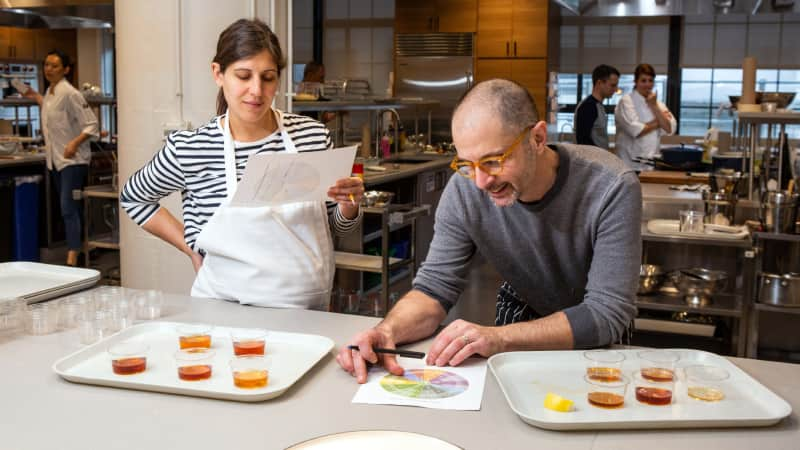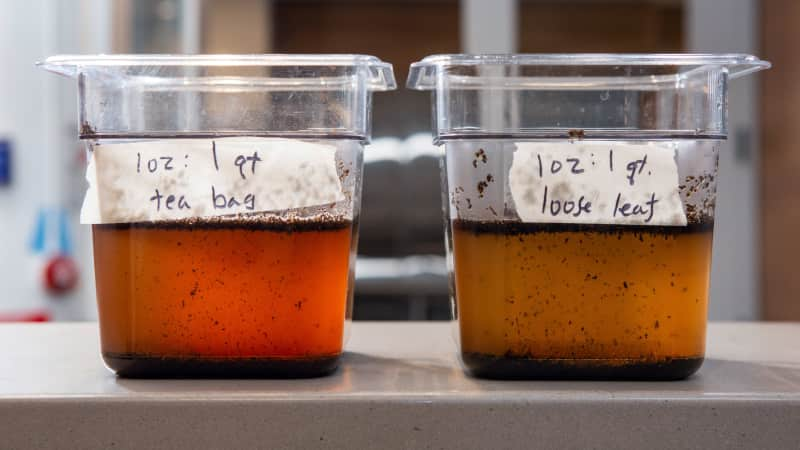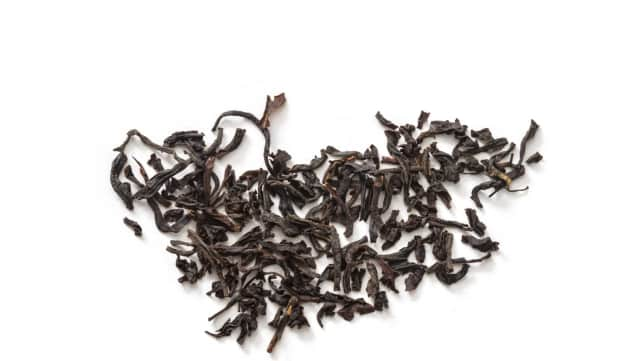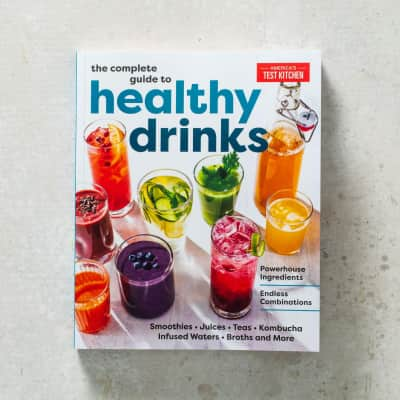Iced tea sure is popular: Of the 3.8 billion gallons of tea consumed in the United States in 2018, a whopping 80 percent of it was iced. I count myself among the many who regularly quench their thirst with the stuff, so I was happy to steep and sip my way through dozens of pitchers to develop guidelines for making the best possible versions of black and green iced tea. Overall, I found that you don’t need to be quite as persnickety about iced tea as you do about hot (particularly if you’re adding flavorings). But you do need to take steps to avoid watery or overextracted brews.
How to Brew the Best Iced Tea
Published June 27, 2023.

Sign up for the Cook's Insider newsletter
The latest recipes, tips, and tricks, plus behind-the-scenes stories from the Cook's Illustrated team.
Appreciating Tea's Special Qualities
To fully savor your tea, iced or hot, pay close attention to the interplay of taste, aroma, and texture.
Taste: As with wine, the flavor of tea ranges from light and delicate to full and pungent. And all teas contain bitter polyphenols, but the exact content varies depending on a number of variables, including terroir, oxidation, and aging.
Aroma: Distinctive aromas that span a broad spectrum are a big component of the flavor of tea. Expect fruity, leathery, floral, or even smoky aromas in black teas. Green teas tend to feature grassy, mineral, floral, and marine scents.
Texture: Great tea isn’t just about taste, it’s also about mouthfeel. Polyphenols can cause astringency, or a pleasant drying sensation, that lingers on the palate. Some infusions also contain compounds that give tea a lingering creaminess.
Should I Use Loose-Leaf or Bagged Tea for Iced Tea?
When I compared iced tea made from loose-leaf tea with iced tea made from tea bags (using the same type and brand for consistency), I found that the former produced a more flavorful, complex drink. That’s because most tea bags are filled with tiny broken tea leaves, called “dust” or “fannings,” that remain after the higher-quality whole leaves are sifted. These dregs have very little interior that’s not exposed to air, so aromas and volatile oils readily escape from the broken surfaces.

How Much Loose Tea to Use for Iced Tea
If you’re making plain iced tea, it pays to spend a little more for good quality loose tea.
Use 1½ tablespoons of loose black tea per quart of water to produce a vibrant yet not overly strong brew.
If using loose green tea, which is generally subtler, increase the amount to 2 tablespoons per quart of water.

Use Tea Bags When Making Flavored Iced Tea
When I prepared our flavored iced teas (scroll down for the recipes) using equal weights of bagged and loose-leaf tea, the differences were too subtle to justify the extra expense of loose-leaf. That said, stick with good quality bagged tea.
The Complete Guide to Healthy Drinks
The Best Temperature for Brewing Iced Tea
Iced tea can be brewed using either cold or boiling water. In a side-by-side comparison, a cold-water, 24-hour infusion tasted flat. That’s because a number of the compounds that give tea balanced astringency and bitterness are extracted more effectively in hot water than in cold water. But iced tea brewed for 4 minutes in water that had been brought to a boil lacked sufficient intensity. Making the tea stronger by brewing longer in hot water only made the tea overly bitter and mouth-drying. Increasing the amount of tea worked, but I ultimately came up with a thrifty hybrid method using boiling water and ice water that produced the same great flavor without extra tea:
- First, steep the tea in 3 cups of water that has been brought to a boil (or 175-degree water for green tea) for 4 minutes.
- Then add 1 cup of ice water and continue to steep for 1 hour. At the cooler temperature, full-flavored aromatic compounds continue to infuse the water and the bitter and astringent ones do not.
How Long to Steep Tea for Iced Tea
Tea can be expensive—so brew with economy in mind. We make a full-flavored drink not by adding extra leaves but by using a hybrid steeping method that takes about an hour.
HOT STEEP: 4 MINUTES
A short, hot steep draws out compounds such as caffeine, theobromine, and polyphenols that make tea pleasantly bitter and astringent.
COOL STEEP: 1 HOUR
Adding ice water slows the extraction of bitter and astringent compounds. Continuing to steep for 1 hour magnifies full-flavored aromatic compounds.
Best Tea for Iced Tea
Here are a few of our favorite teas to serve iced (and hot). To learn more about the differences between green and black tea, click here.
Black

Variety: Assam
Profile: full-bodied tea with robust, malty flavor

Variety: Keemun
Profile: a smooth, creamy mouthfeel; slight smokiness; and hints of cocoa

Variety: Second Flush Darjeeling
Profile: mild sweetness, citrus, and light floral notes
Green

Variety: Gunpowder or Dragon Well (slightly sweeter)
Profile: astringency and grassy, vegetal flavors

Variety: Sencha
Profile: seaweed, alfalfa, and umami
How to Sweeten Iced Tea
Granulated sugar can be difficult to dissolve in iced tea, leaving grit in your drink, but sugar in the form of syrup is easy to incorporate. Our quick method for a rich syrup (which has a higher concentration of sugar to water than a "regular" simple syrup, which leads to less dilution) uses warm water instead of requiring the usual stovetop simmer, making it even easier.
Whisk ¾ cup sugar and ⅓ cup warm water in bowl until sugar has dissolved, about 5 minutes. Let cool completely, about 10 minutes, before transferring to airtight container. Makes 1 cup. (Syrup can be refrigerated for up to 1 month.)







